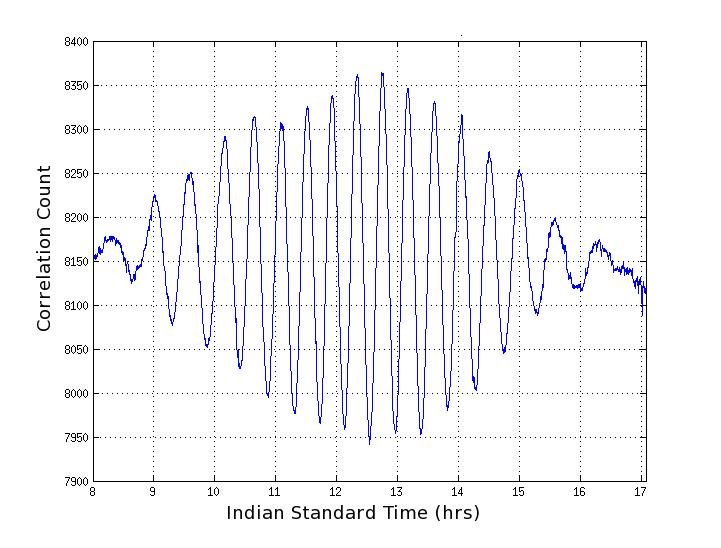PUBLIC OUTREACH PROGRAMME
As a part of its public outreach programme, the institute offers a two element radio interferometer operating at 191.4 MHz to science / engineering students pursuing their Bachelor's / Master's degree in colleges / universities. The motive is to help the students learn the basics of radio astronomy through hands-on experience. Interested students may apply for the kit through the Head of their Institution to : The Director, Indian Institute of Astrophysics, Bangalore 560 034. The recipients of the kit will be trained in the observatory to: (i) design, fabricate, and characterize the antenna and receiver system; (ii) develop software for data acquisition and analysis; and (iii) carry out observations of radio emission from the Sun and other strong cosmic radio sources.
The basic receiving system consists of a pair of dipole antennas tuned to receive radio frequency (RF) signal at ~191 MHz. The RF signal incident on each antenna is amplified independently in a broad band amplifier, and then transmitted to the receiver room via coaxial cables. In the receiver room, the signal from each antenna is first passed through a band pass filter having center frequency ~191.4 MHz and half-power bandwidth ~6 MHz, to minimize the contribution from interfering signals at other frequencies. The filtered signal is then mixed with a local oscillator (LO) signal at 180.7 MHz to down convert the RF signal to an intermediate frequency (IF) signal at 10.7 MHz. The output of the mixer is amplified and passed through a band pass filter with center frequency ~10.7 MHz and half-power bandwidth ~1 MHz. The output from the IF filter corresponding to each antenna is then fed to the digital receiver for digitization and correlation. There is also provision for integrating the correlated data before transmission to the computer for storage, display, and analysis.
Recipients of the kit till date:
- Mohanlal Sukhadia (MLS) University, Udaipur
- Rajasthan Technical University, Udaipur
- St.Xavier's College, Kolkata
- J.C. Bose Institute, Kolkata
- Indian Institute of Science Education & Research (IISER), Pune
- Electronics Science Department (Pune University), Pune
- Indian Centre for Space Physics, Kolkata
